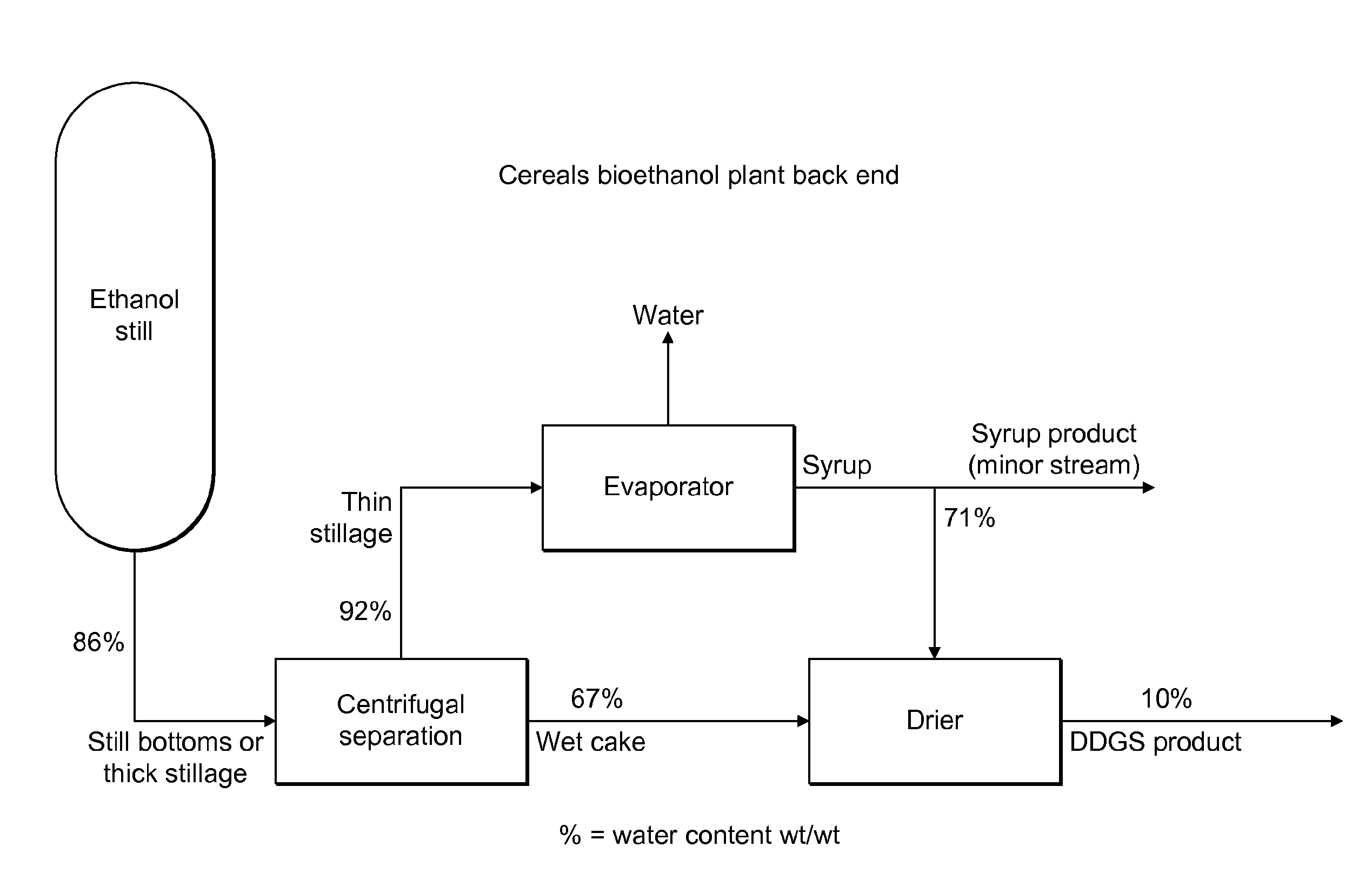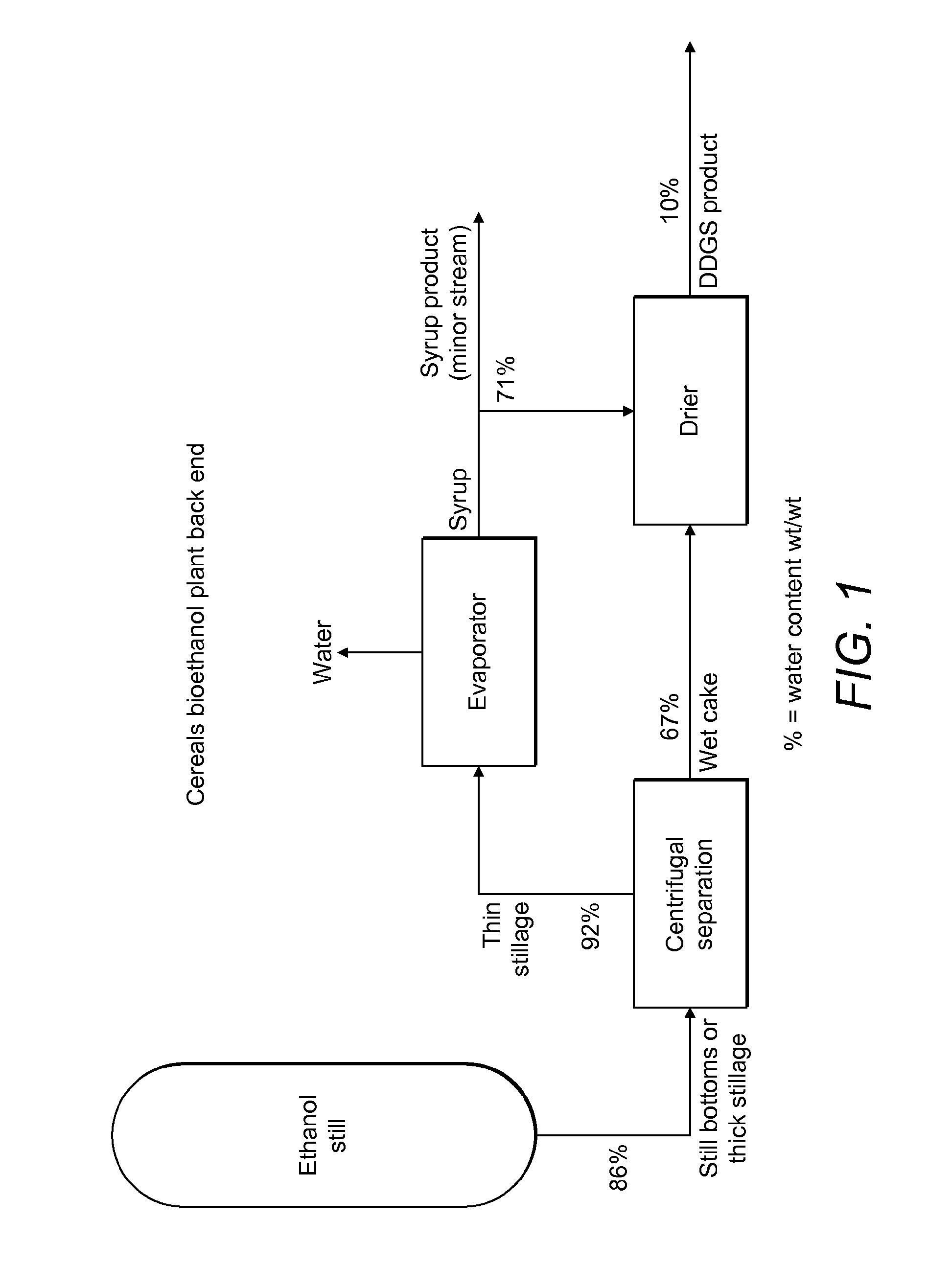Hydrolysis and Fermentation Process for Animal Feed Production
a technology of animal feed and fermentation process, which is applied in the field of making animal feed products and animal feed products, can solve the problems of not being able to send bran directly to ddgs, and achieve the effect of economic benefits
- Summary
- Abstract
- Description
- Claims
- Application Information
AI Technical Summary
Benefits of technology
Problems solved by technology
Method used
Image
Examples
example 1
Acid and Enzyme hydrolysis of Thin Stillage
Introduction
[0066]Thin stillage was obtained from a bioethanol process (Ensus). FIG. 1 shows the Ensus process and the point where thin stillage is produced in the process. Percentage water content (wt / wt) is shown for each step of the process. Thin stillage is the semi-solid residue stream of the ethanol process and it is obtained after removing wet cake from the residue. The thin stillage is expected to be starch and glucose free and the carbohydrates will mainly be cellulosic and hemicellulosic residues. It is also expected that its hydrolysis, under optimum conditions, will release most of the sugars from these materials.
Materials and Methods
Thin Stillage
[0067]Thin stillage was made available by Ensus from their bioethanol plant (See the introduction section and FIG. 1).
Acid Hydrolysis of Thin Stillage In a 100 ml Duran bottle containing about 12.5 ml of thin stillage, 0.125 ml of concentrated nitric or 0.136 ml of sulphuric acid was ad...
PUM
 Login to View More
Login to View More Abstract
Description
Claims
Application Information
 Login to View More
Login to View More - R&D
- Intellectual Property
- Life Sciences
- Materials
- Tech Scout
- Unparalleled Data Quality
- Higher Quality Content
- 60% Fewer Hallucinations
Browse by: Latest US Patents, China's latest patents, Technical Efficacy Thesaurus, Application Domain, Technology Topic, Popular Technical Reports.
© 2025 PatSnap. All rights reserved.Legal|Privacy policy|Modern Slavery Act Transparency Statement|Sitemap|About US| Contact US: help@patsnap.com



